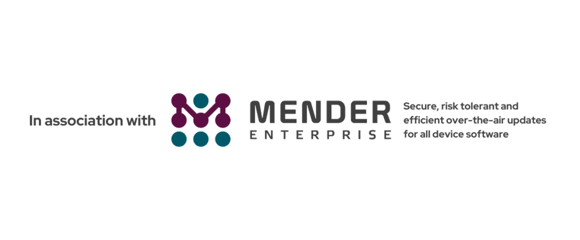The Device Chronicle interviews Andrew Bright, Managing Director, Woodside Capital Partners to find out about the key drivers behind Industrial IoT innovation, the tension between OT and IT, and how startups in Industrial IoT can succeed.
We started the interview by looking to understand what are the key use cases that IoT in conjunction with cloud and AI-orientated technologies can address and improve? Andrew begins by saying that achieving Increased uptime and lower maintenance costs is a classic example of where IoT has been leveraged. Andrew continues to describe the approach in the industry “Put the vibration sensor on a motor or a gearbox as the most basic starter application. The fundamental idea is to continuously check the health of the equipment and to move from scheduled to predictive maintenance.”
Process optimisation in Industrial IoT
A second use case which has emerged more recently is the one that focuses on increasing production quality and process optimisation, where either visual or non-visual techniques are used to continuously monitor the manufacturing process to ensure that it is running correctly and that everything that is produced is within the agreed specification with the customers.
A third use case is perhaps a “smaller” one but can be nevertheless very compelling. Safety and regulatory compliance is a great commercial sell if a start-up can come with an IoT process that clearly improves the safety or ensures compliance than this is something that is very hard for industry to say no to. This is because if a manufacturer needs to prioritise spending or CapEx, the first priority is always health and safety. The second priority for expenditure will be to remove bottlenecks so as to get more out of the process. The third is anything novel that increases efficiency, energy usage or improves maintenance.
Covid 19 and Industrial IOT
The onslaught of Covid 19 has reframed and increased the importance of Industrial IoT and digitalisation as a whole. Andrew explains that the topics of an ageing workforce, knowledge capture; and remote working and information transparency have come to the fore for manufacturing leaders. “These two use cases have seen an acceleration. The ageing population has led to the increased implementation of mobile workforce management, controlling and providing digital assistance both to remote field workers and factory workers. With Covid, there is less face to face interaction so digital support for employees has become much more important. Remote working and information transparency. The managers are no longer in the factories, they are now sitting in the home offices but they still want to know what is going on in operations and on the shop floor. They are obviously physically constrained from getting access to information.” The ability to get key information and insight from the operation and the factory floor and to be able to present that information to the managers sitting at home in front of their screens so they can make faster and better decisions, this is what is needed. But stil most companies were far away from that. Covid highlighted this missing link and accelerated the adoption of solutions for this disconnection from key information.
OT and Industrial IoT
For Andrew, another hot topic is how operational technology (OT) can collaborate and co-exist with Information Technology (IT). He gets quickly to the core of the challenge: if you are a sales or HR professional using Salesforce or equivalent cloud platform, then it is very easy to get that information and put it on a home office screen. But it is very different with industrial production which is based on older systems such as DCS and PLCs. Getting these OT systems communicating well with the IT environment has been very difficult for manufacturers to achieve. Industrial IOT is all about solving this challenge. The old OT systems produce a lot of data but most of this data is not used. Andrew also points out that here is also the problem that the operators have so many alarms going off that they ignore 99% of them, they are so overwhelmed with data on the factory floor. Bringing that data into the cloud means that managers can get more insights from that data and they can run additional analytics on top to actually then help the operators make sense of what they are really seeing. Alarm management can leverage cloud applications to help operators assess which 5 of the 200 alarms going off are really the critical ones to address quickly. Which alarms on their operating screens should they actually care about? It is about reusing the data to make the OT process better.
Slow transition
However, the transition to digitalisation of OT is very slow. There are many restraints holding up the market. Andrew believes that industry still finds it hard to calculate the ROI from large investments in IoT and cloud infrastructure and so to assemble compelling business cases. As a result, they think small first and do many pilots which in turn get stuck in “pilot purgatory”. McKinsey reports that over 70% of deployments get stuck at the pilot phase. Only 15% of pilot projects actually move on to something more successful within a year. Pilots take a tremendous amount of time. Andrew says that the main reason they get stuck is that the industry decision makers don’t want to say no because they don’t want to be seen to be saying that digital doesn’t work. But they also don’t have enough information for them to say yes. So in the end they don’t say anything and they get stuck.
Making IoT startups successful
What do startups need to do to be successful in Industrial IoT? Andrew observes that many get to annual revenues of €5 to 6million and then the growth plateaus. This is largely down to the pilots not growing as expected. Andrew advises that the pilot phase must be short and pain free, “there is a company who has rolled out a 15 minute online pilot program. The start ups must help show the return and quantify the benefits. When a start-up enters into the pilot contract with an industrial customer, they must build in an automatic gate to the commercial phase. They must make it hard for the industrial customer to say no. This is difficult as start ups usually don’t have a lot of leverage.
Immaturity issue
A large challenge for industrial IoT and innovation within it, is that the sector is still immature. Andrew explains “So the executives (in I IoT startups) are either investors, or people who are very experienced and expert in technology but sometimes do not have the industrial experience and context. The industrial customers are also very challenging to deal with. The start up must demonstrate that they have good knowledge of whatever vertical they are in, and if they want to jump from one vertical to the next one, this is very difficult to do as each vertical has its own “language”, and its own working culture. If the start up doesn’t understand these, they will likely stand out and be rejected by what is overarching conservatism within each vertical.
Secret sauce for success
What then is the secret to success for startups in Industrial IoT? Andrew advises “Move from pilot to fill production and then do again in another company or sector, the successful start up needs something that is repeatable. They will want to avoid the situation where each time they meet a new prospect or customer, that they have to start from scratch. They must be reusing something close to 80% of the code, each time they start a new project. For many start ups and this is where they slip, every time they get a new customer, they get persuaded to do a lot of customization and this slows the growth of the start-up and the rollout of a repeatable product. Some have succeeded. C3 is one to watch, they may succeed in digitally transforming industry without getting stuck. Andrew says of C3 “The team is strong there and understands the industry vertical very well. They have strong IoT and AI backgrounds as well. They have a way of solving the customer’s problem in a scalable and repeatable way. Let’s reuse 80% of the code from the last project while still delivering what the customers really want.”
In conclusion, Andrew sees high growth in Industrial IoT and believes that cybersecurity will hold the greatest promise as the verticals don’t matter that much. “The weaknesses in cybersecurity are the same, so security skills and solutions can be quickly transferred based on the common use of the same underlying SCADA system in the Oil & Gas and energy verticals as in the utilities vertical for instance.”
We wish Andrew and his colleagues at Woodside Capital well and encourage you to read his latest report on Industrial IoT.
For another article on IoT in manufacturing read about the Achenbach case.

